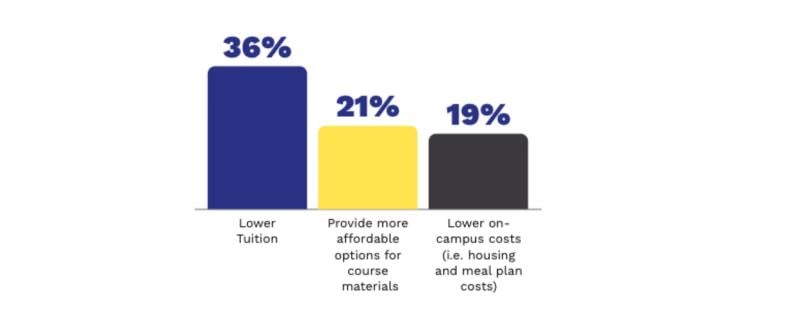A recent survey across the U.S. reveals the impact of college costs and how students perceive the value of a college degree.
Enrollment declines may be due to a plethora of reasons. Are students reconsidering the value of a college degree, or are other causes the ones to blame?
As another academic year begins, nearly two-thirds of college students will be facing their education expenses completely on their own, a new survey reveals. The question arises once again, what is the current return on investment (ROI) of a college education?
To answer this question, Education technology provider Cengage polled 1,200 American undergraduate students between the ages of 18 to 44 who are currently enrolled in a two-year or four-year degree.
The results of the college affordability survey show that 68 percent of college students say they or their families struggle to pay for their education. Almost half of the students polled, or 46 percent, said tuition has been the biggest pain point followed by technology, books and course materials, and housing.
The survey revealed that the majority of college students are solely paying for their education, with a higher percentage of two-year students paying their own way. Nearly half of the students polled, 46 percent, said they are left with $250 or less after paying for education costs each month. Fourteen percent of students have only $100 or less left each month after paying expenses.
Despite the struggles, the majority of students polled still feel strongly that their education is worth what they are paying as long as college is a gateway to financial independence and prompt employment. However, they say they could use some help from their institutions to make their struggle a little easier.
Cost savings that would be most impactful to students: What institutions may do to help
According to the National Student Clearinghouse Research Center, enrollment declines at both undergraduate and graduate levels have continued to worsen. In 2022, undergraduate enrollment accounted for most of the decline, dropping 4.7 percent this spring, or over 662,000 students from spring 2021.
Understanding the reasons that are keeping some students from enrolling or dropping out can help colleges and universities re-evaluate their offers. Trying to adapt to the current situation by lowering some tuition fees and providing more course materials can positively impact enrollment, as per students’ wishes.
The following cost savings would be more impactful to students:

According to the Cengage survey, 81 percent of students said schools should spend more money on providing course material and less on amenities such as dorms, facilities, and athletics. Students would be happy to trade amenities for learning support. Over one-third of students, or 36 percent, agree that the most impactful thing their college or university can do to lower the cost of education is lowering tuition.
Twenty-one percent of students believe providing more affordable options for course material would help them. In addition,19 percent of the surveyed mentioned lowering on-campus costs, such as housing and meal plans, among the top things institutions could do in order to help.
“Affordability continues to be a major barrier for today’s college students,” said Kevin Carlsten, Senior VP of the U.S. Higher Education Institutional Group at Cengage. For Carlsten, more needs to be done collectively to lower cost barriers. “Students shouldn’t have to make painful trade-offs when it comes to their education and a path to a better future,” he said in a press release.
This infographic summarizes the survey's full results on students' views on affordability and the value of college.
There is no doubt that institutions can and should better support students in pursuing higher education because, at the end of the day, education is always worth it.